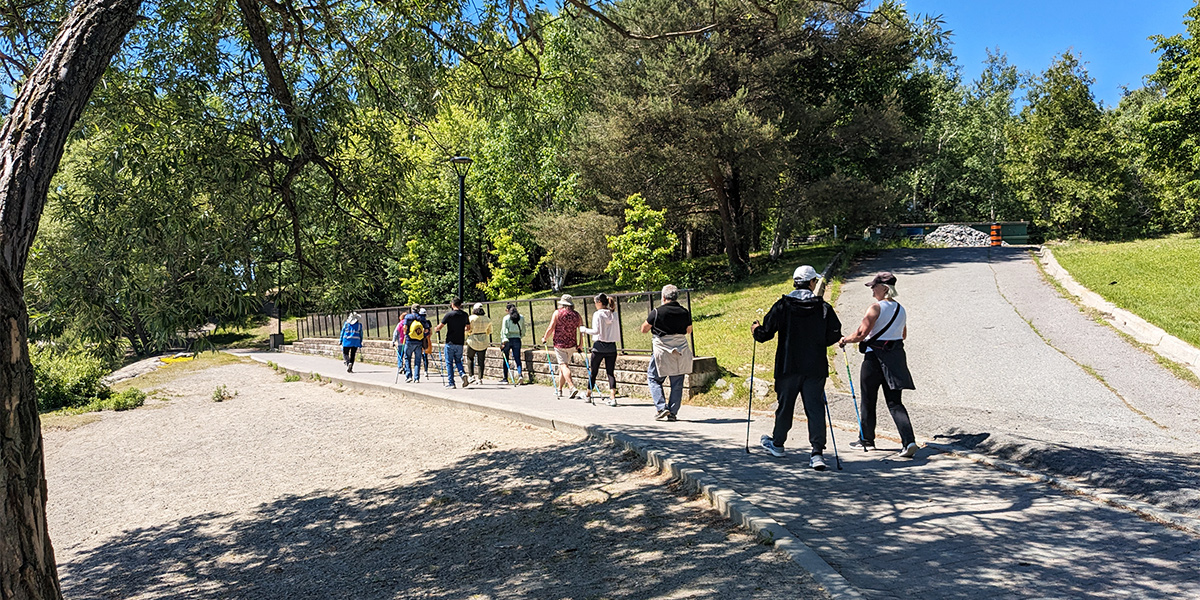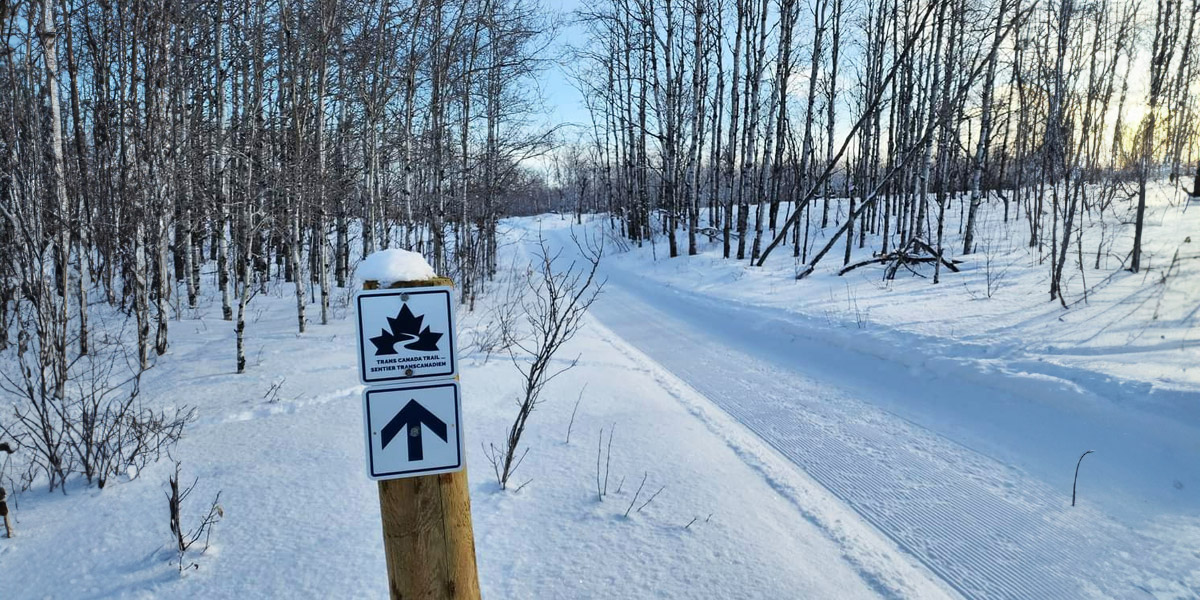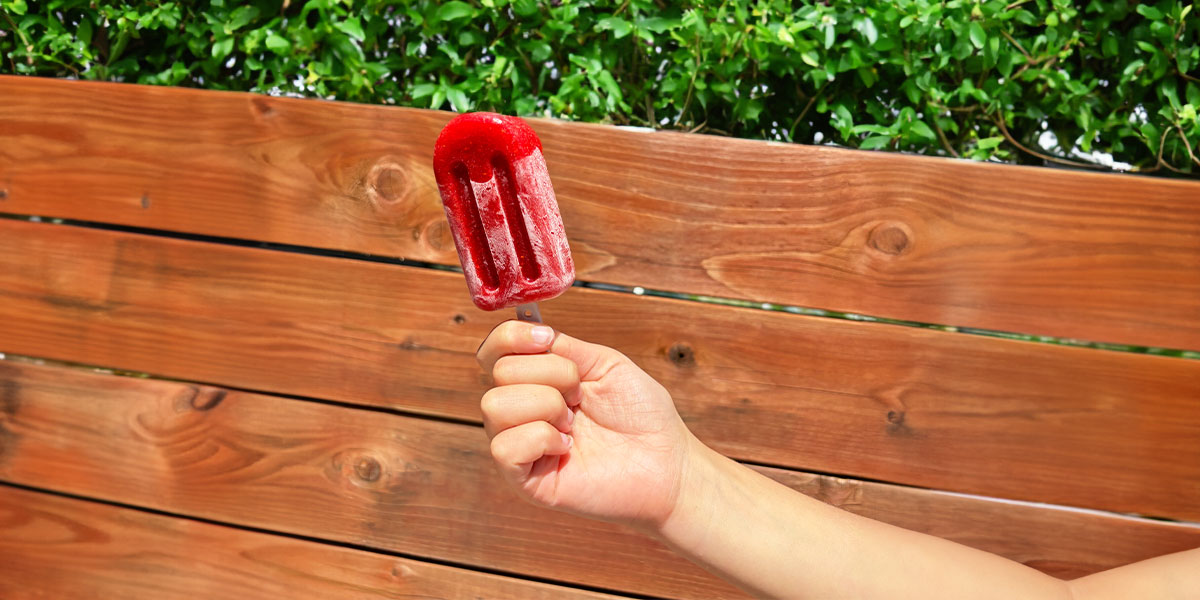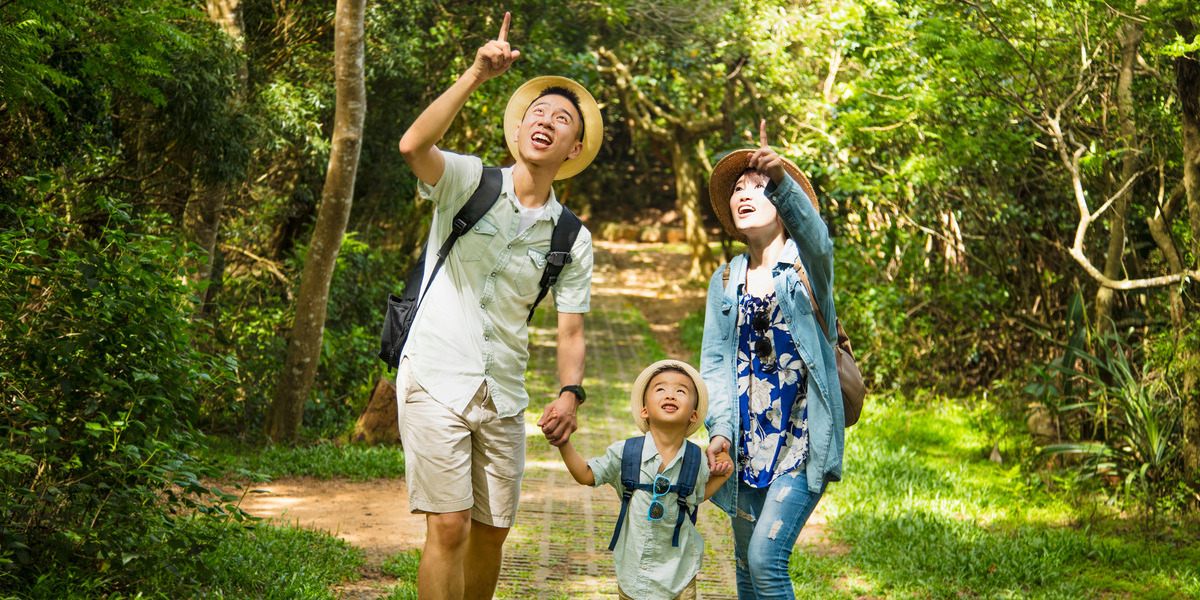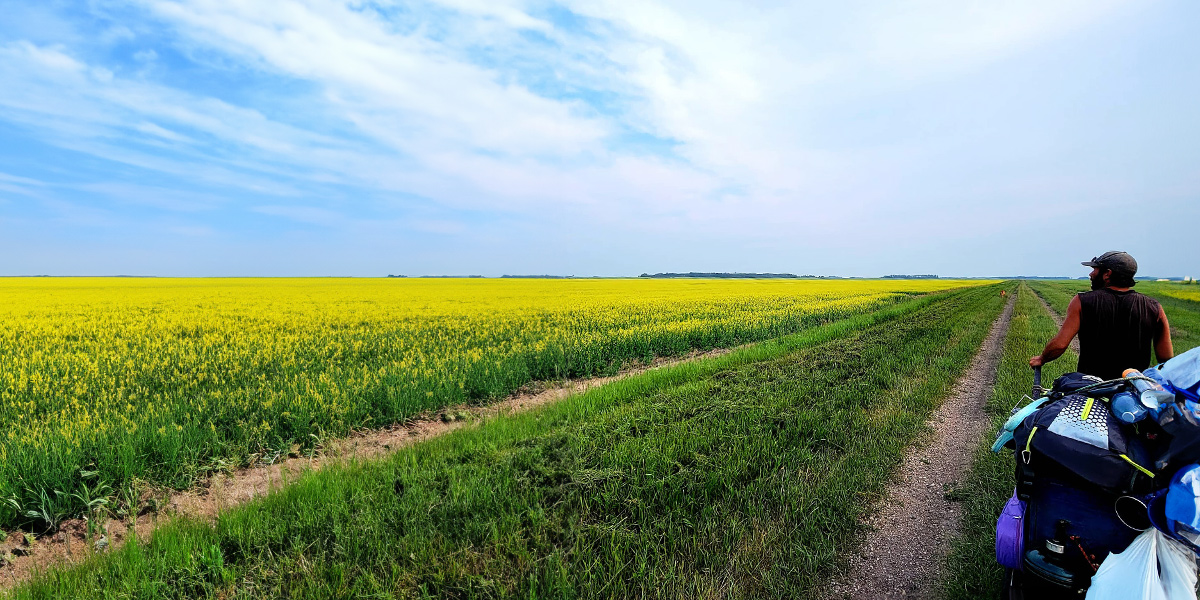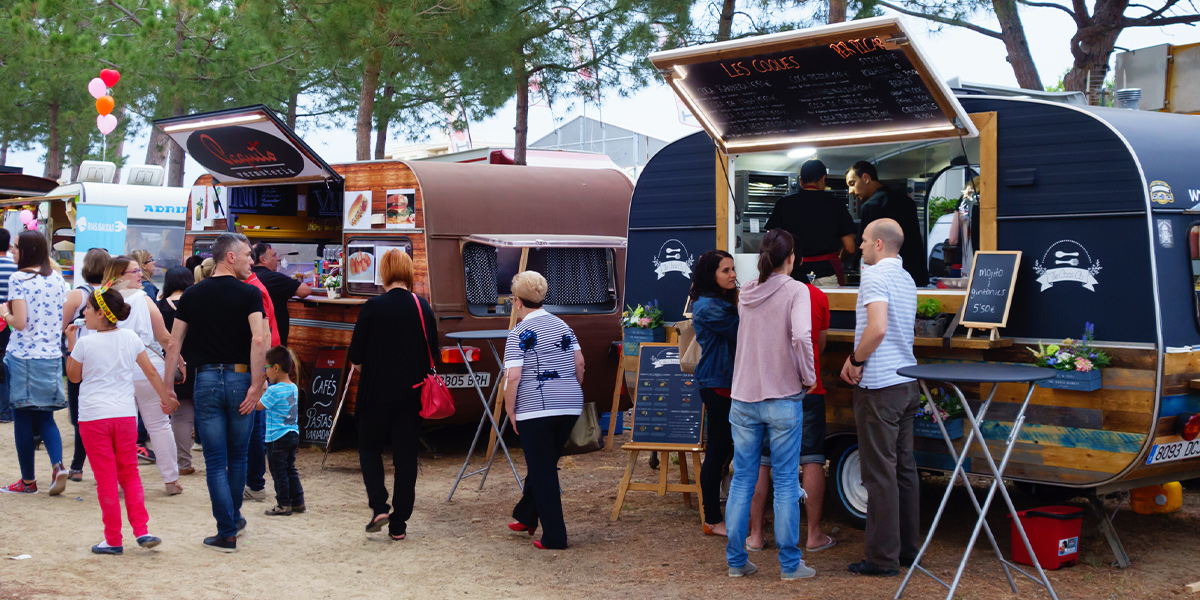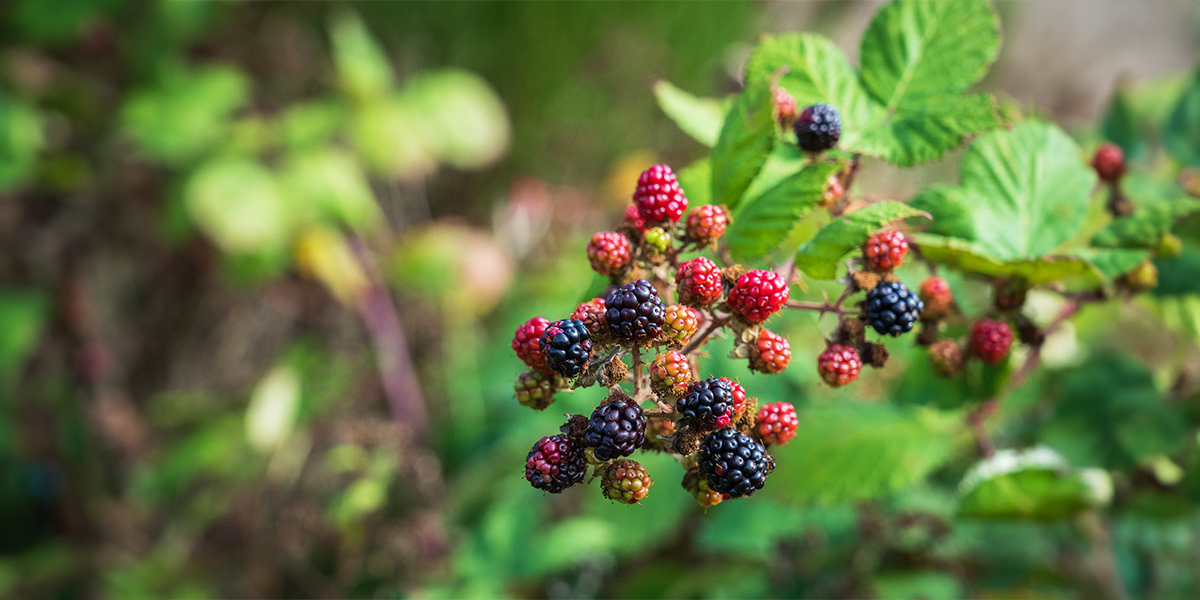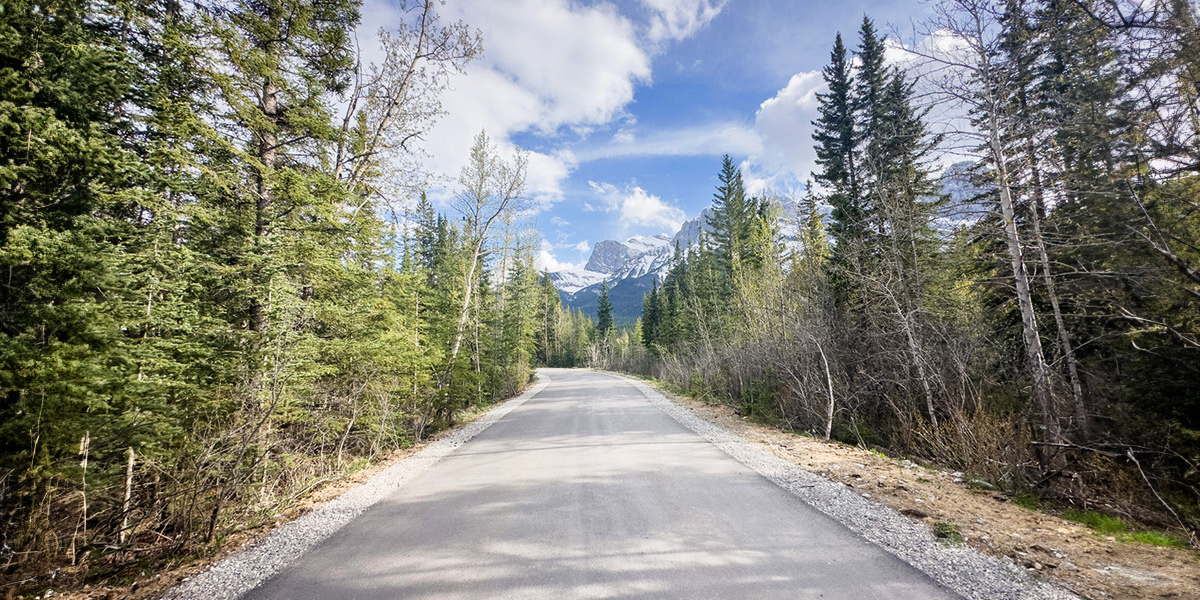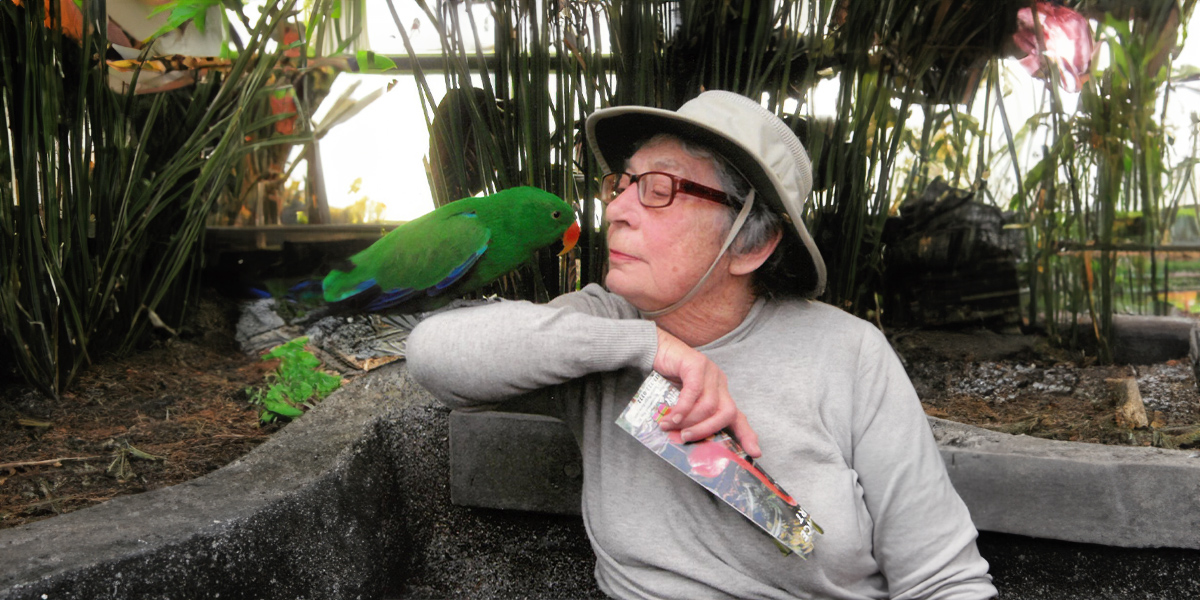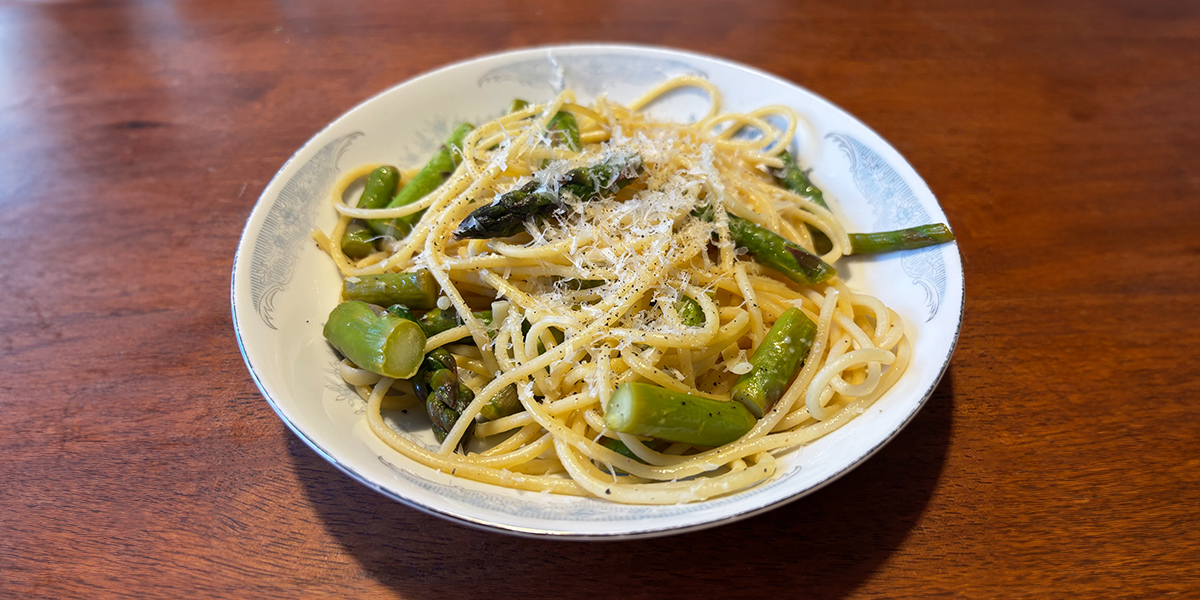Bonnie’s Trans Canada Trail: Finding Community on the Trail
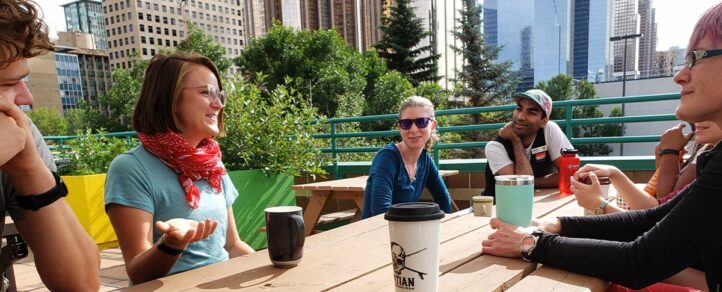
Solo-walking the Trans Canada Trail as a vehicle for community? No, it’s not a contradiction in terms!
It wasn’t exactly a well-thought out strategy – just a feeling that experiencing Canada at human-pace might help me reconnect with the Canada I had in mind.
An aspirational vision
The Canada I had in mind? A vast wilderness, sparsely populated with hearty, humble, and diverse humans. The seeds of 1960s-era political turmoil and the 1971 Canadian Multiculturalism Policy – a world first that came to life in contrast to America’s “melting pot” – both cemented aspects of an existing Canadian reality and nurtured an aspirational vision of connection based on expansive diversity, openness, and opportunity.
By the time I was a kid in the 90s, multiculturalism was a well-accepted concept, and I was firmly enamoured with the national narrative. But as I came into my own, my loving relationship with Canada turned tense as I dug deeper into the numerous injustices of our collective past and present. I had to know: who are we, really? What I’ve come away with is community in spades and people, like me, trying to find ways to bridge divides.
Community takes natural root
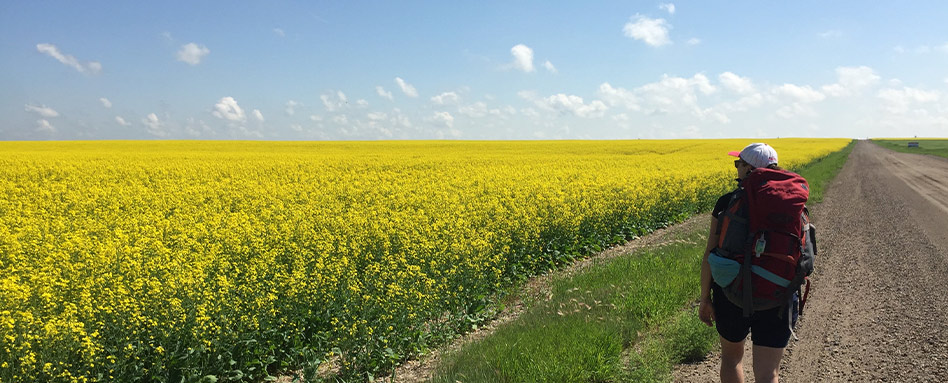
Those familiar with American cross-country trails might have romantic ideas of the hordes of people all heading out on foot to accomplish the same goal. Community takes natural root as people criss-cross one another and share many of the same experiences in trail towns, helped along by the same seasoned Trail Angels year after year. In so many ways, the national treasure that is the Trans Canada Trail differs from its American cross-country cousins, with each country’s approach to the cross-country trail standing as an allegory for the nation it is embedded in: where America is the thru-hike melting pot, Canada’s Trans Canada Trail is a multicultural, multifaceted, multipurpose trail. The community that results is nothing short of community for all.
Accessible to different types of travellers
The most striking thing about our long Trail is how accessible it is to different types of travel: sections can be approached on foot, bicycle, wheelchair, snowshoe, horse, and boat, to name just a few, but not all sections can be approached in all ways. Whatever your preferred mode of transportation is, you’ll find it on the Trans Canada Trail, and you’ll find members of these diverse communities of trail-users sharing trail-side chats, making space for – and yielding to – one another. Trail people are community people by nature. If you’re looking to expand your network, get outside!
One of my favourite ways that the Trans Canada Trail and related trail groups facilitate community is via trail registers. Along the Kettle Valley Rail Trail as well as the Columbia and Western Trail in BC, trail registers connected me with those who had gone before and those yet to come. I am here, I thought as I wrote my name in the register atop the remote and rugged Gray Creek Pass through the Purcell Mountains. Taking in the names and dates etched above mine, I was filled with presence and pride as a summer solstice snow descended on the mountain pass.
“You must be Bonnie!” more than a few two-wheeled travellers on bike and motorcycle said as they stopped to chat through the 91-kilometre stretch, having read my register logs along the way and taken up the invitation to connect. However small and fleeting, these interactions put a bounce in my step and offered me a sense of safety and community on what would otherwise have been a lonely walk in the overcast and silent wilderness.
Seen and supported
Further along the trail, past Cranbrook, BC, I got caught in bad weather as I walked the Trail, not another soul out in the inclement weather. Flashes of lightning and bone-rattling cracks of thunder rolled through the mountains sparking a good deal of fear in me as I stood exposed in the valley.* I was exhausted from too many nights sleeping on-edge through grizzly territory. Far from shelter and having no option to escape the storm, I pulled my tent from my pack and pitched it trail-side to wait out the storm. An afternoon nap was just what I needed.
As I eased myself to sleep, I heard muffled voices and thought I felt my tent walls ruffle as a rock slid underneath. Was someone here to tell me to move along? Not quite conscious, I brushed it off. When I woke, I realized what I’d missed: a note from cyclists Kristen and Trent who had been reading my trail register logs and finally caught up to me. Though we never did meet, the note they left was a reminder of the connection and community that exists on trail: we are so often seen and supported, even when we don’t realize others are there looking out for us.
Plug in to the trail community
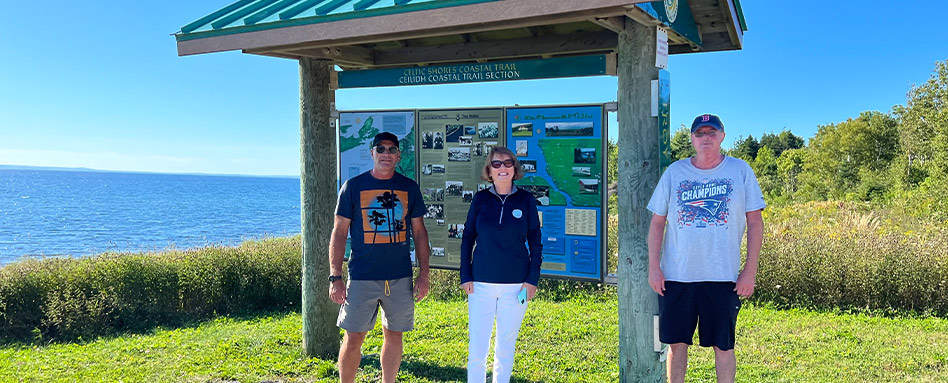
Maybe you’re thinking a cross-Canada community is too big in scope! Did you know there are over 500 local trail organizations partnered with the Trans Canada Trail? Connecting with these organizations and the people who keep them running smoothly is an easy way to plug in to the trail community.
In Winnipeg I had the pleasure of meeting Tim Coffin and Janette Crawford of Trails Manitoba, who enthusiastically connected me with the Neepawa trail volunteers, who then joined me as I walked through their stretch of the Trans Canada Trail! South of Inverness, NS, I had the fortunate timing of happening upon the Celtic Shores Coastal Trail’s annual trail survey, meeting dozens of the friendly volunteers who contribute to the trail. In both cases (and so many, many more!) it was through these interactions with local trail-users that I learned about the local history, people, land, and culture, becoming immersed in the community one step, one conversation at a time.
I see the Trail everywhere
You might even discover new parts of your own community through the Trans Canada Trail! In Quebec City, my hosts Leslie and Luc told me they just noticed that a trail in their neighbourhood is part of the Trail; that they had only clued in to the closeness of the Trans Canada Trail after meeting me. I used to be like that too, but now I see the Trail everywhere. Best of all, 11 months of walking has shown me that if I follow the Trans Canada Trail, I’m sure to see some of the best parts a particular community has to offer.
Not sure where to start?
Maybe you’re interested in tackling a smaller section of the Trans Canada Trail as a weekend backpack or short cycling trip. Not sure where to start? The online trail community is just as vibrant and happy to chat as the on-trail community!
Follow provincial organizations like Trails BC or Trails Manitoba on social media, or connect with individual trail users by searching the #transcanadatrail hashtag or using the Trans Canada Trail map to find local section names and searching that hashtag. In my three years of experience being embedded in the Trans Canada Trail online community, the numerous hikers, cyclists, skiers, snowshoers, and canoe/kayakers who have tackled big stretches of the Trail are so supportive and happy to share their experiences!
Keeping the coast to coast to coast Trail dream alive
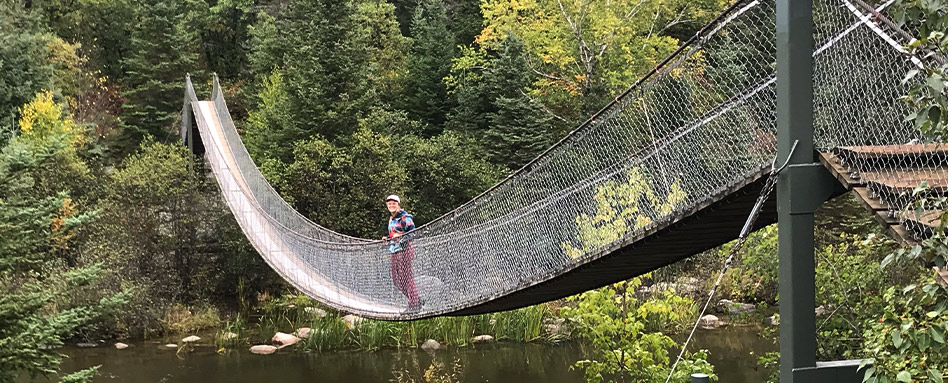
Like Canada and Canadians, the Trans Canada Trail is a medley of things, with community existing in a myriad of ways: the coming together of over 15,000 communities, 500 local trail groups, millions of trail-users, and thousands of volunteers who keep the coast to coast to coast Trail dream alive.
Amongst these stories still being written, the Trans Canada Trail is a ribbon of connection and community; an invitation to explore our greatest gift, the great outdoors; and a path to stretch our imaginings of Canada and what lies beyond our own homes.

“More than ever was I convinced that the old way of seeing was inadequate to express this big country of ours, her depth, her height, her unbounded wildness, silence too strong to be broken – nor could ten million cameras, through their mechanical boxes, ever show real Canada. It had to be sensed, passed through live minds,
sensed and loved.” – Emily Carr

*If you can avoid it, being outside during a lightning storm is never a good idea! Click here for best practices if you do get caught outdoors in lightning.
Want to learn more? Keep an eye on this page in the coming months as I share section highlights, safety tips, trail magic, and what it was like tackling the Trail on bicycle after breaking my foot! You can also follow my Instagram stories (@bonnbury) and my blog (www.bonnvoyages.ca) for photo journals from the Trail. See you outside!


